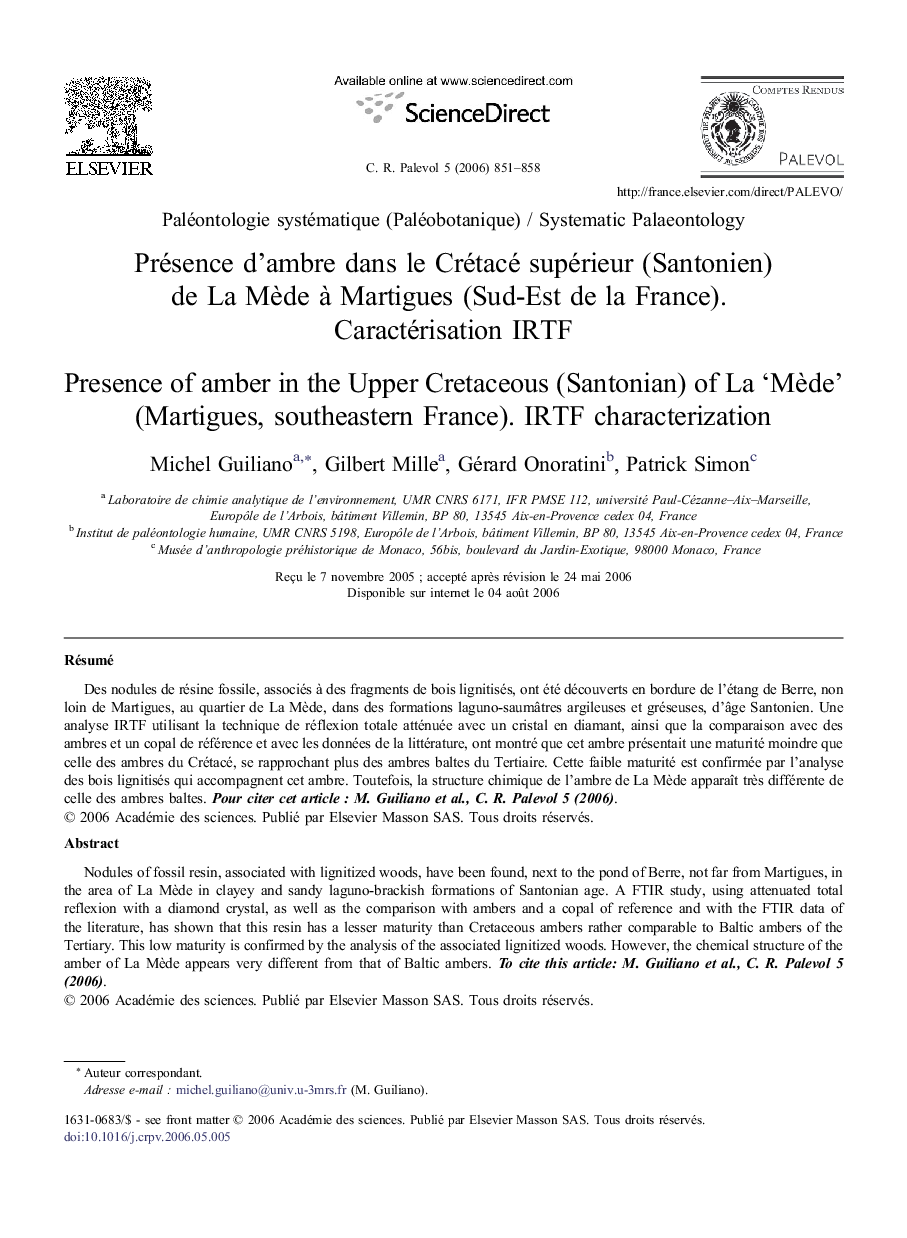| Article ID | Journal | Published Year | Pages | File Type |
|---|---|---|---|---|
| 4746607 | Comptes Rendus Palevol | 2006 | 8 Pages |
RésuméDes nodules de résine fossile, associés à des fragments de bois lignitisés, ont été découverts en bordure de l'étang de Berre, non loin de Martigues, au quartier de La Mède, dans des formations laguno-saumâtres argileuses et gréseuses, d'âge Santonien. Une analyse IRTF utilisant la technique de réflexion totale atténuée avec un cristal en diamant, ainsi que la comparaison avec des ambres et un copal de référence et avec les données de la littérature, ont montré que cet ambre présentait une maturité moindre que celle des ambres du Crétacé, se rapprochant plus des ambres baltes du Tertiaire. Cette faible maturité est confirmée par l'analyse des bois lignitisés qui accompagnent cet ambre. Toutefois, la structure chimique de l'ambre de La Mède apparaît très différente de celle des ambres baltes. Pour citer cet article : M. Guiliano et al., C. R. Palevol 5 (2006).
Nodules of fossil resin, associated with lignitized woods, have been found, next to the pond of Berre, not far from Martigues, in the area of La Mède in clayey and sandy laguno-brackish formations of Santonian age. A FTIR study, using attenuated total reflexion with a diamond crystal, as well as the comparison with ambers and a copal of reference and with the FTIR data of the literature, has shown that this resin has a lesser maturity than Cretaceous ambers rather comparable to Baltic ambers of the Tertiary. This low maturity is confirmed by the analysis of the associated lignitized woods. However, the chemical structure of the amber of La Mède appears very different from that of Baltic ambers. To cite this article: M. Guiliano et al., C. R. Palevol 5 (2006).
